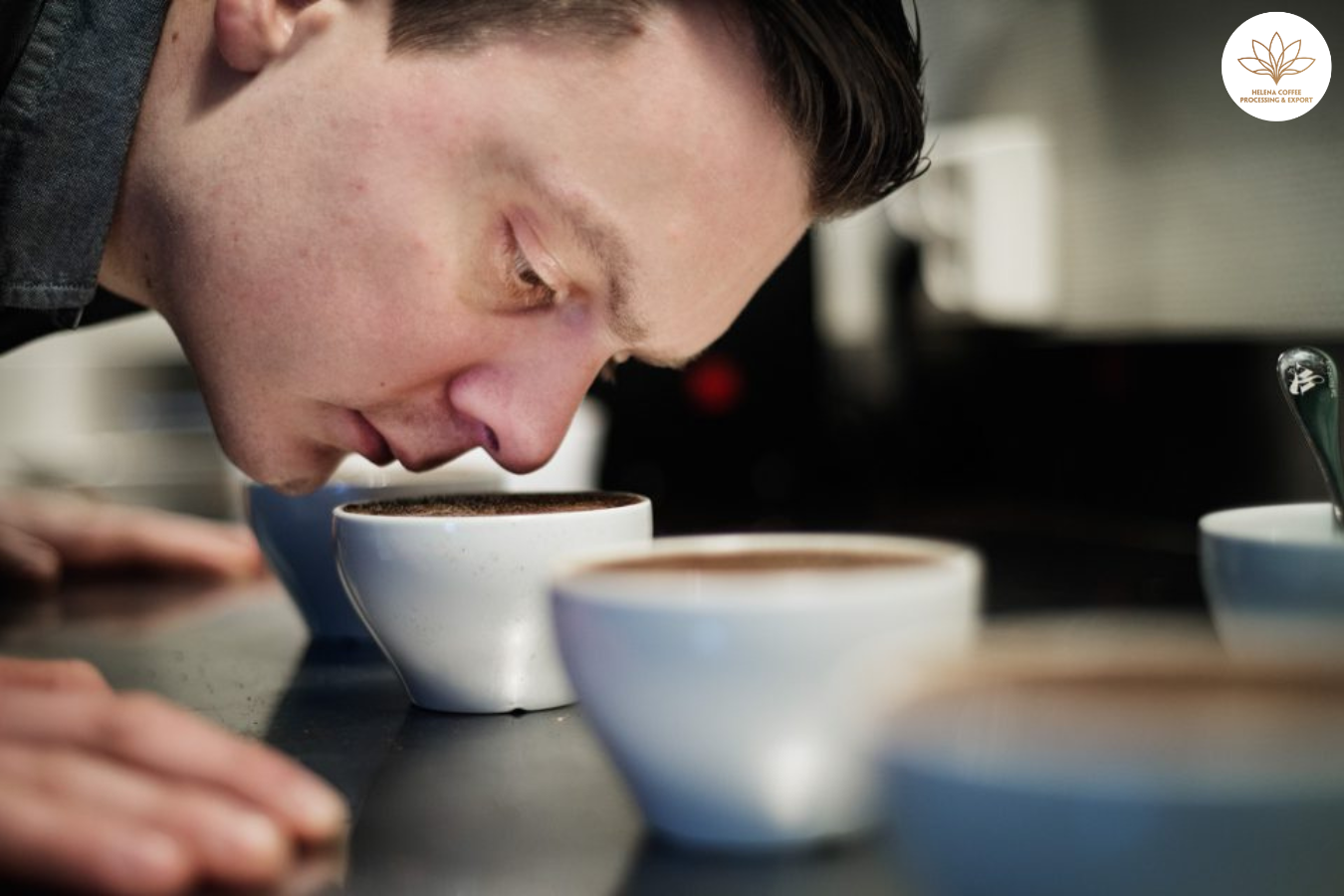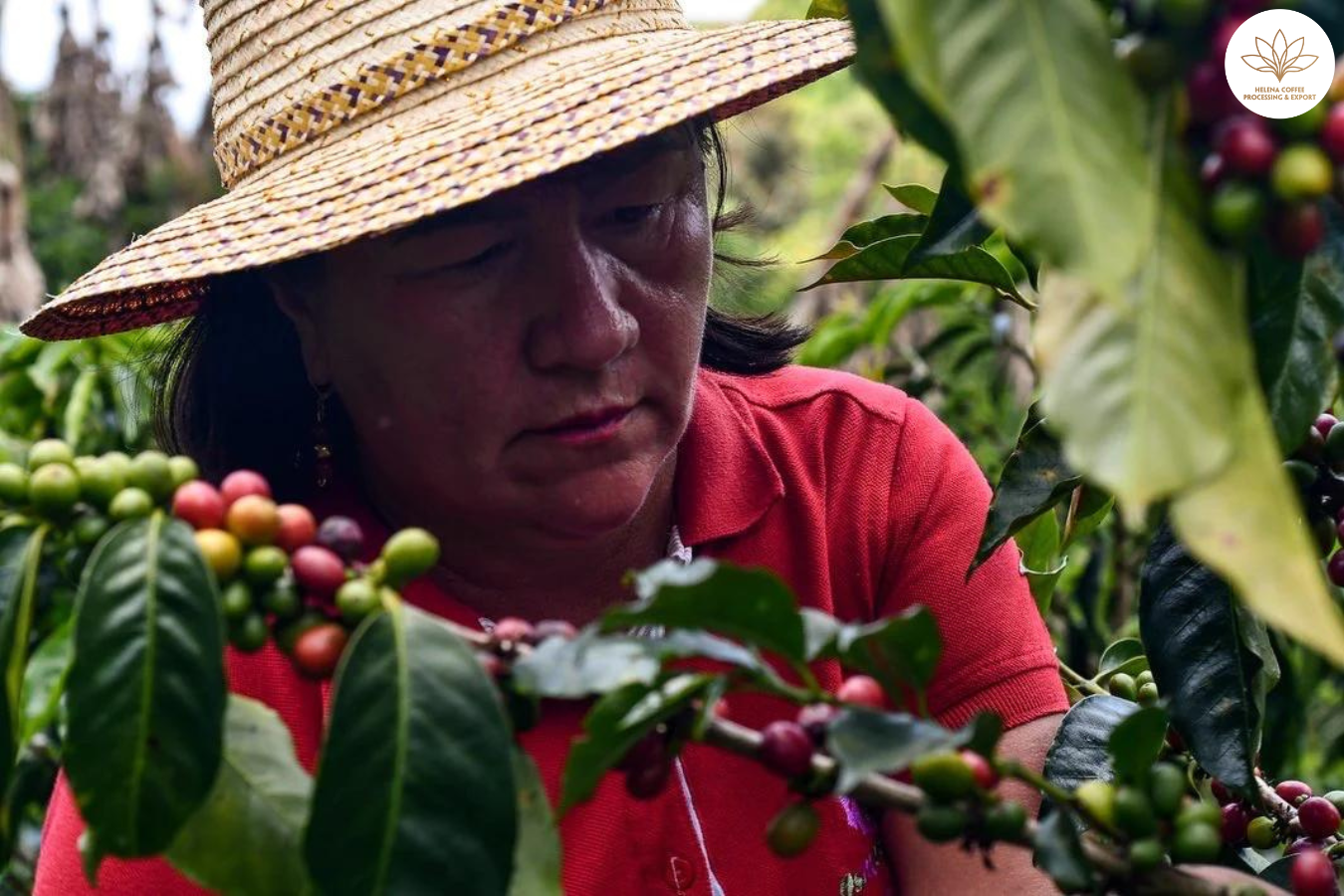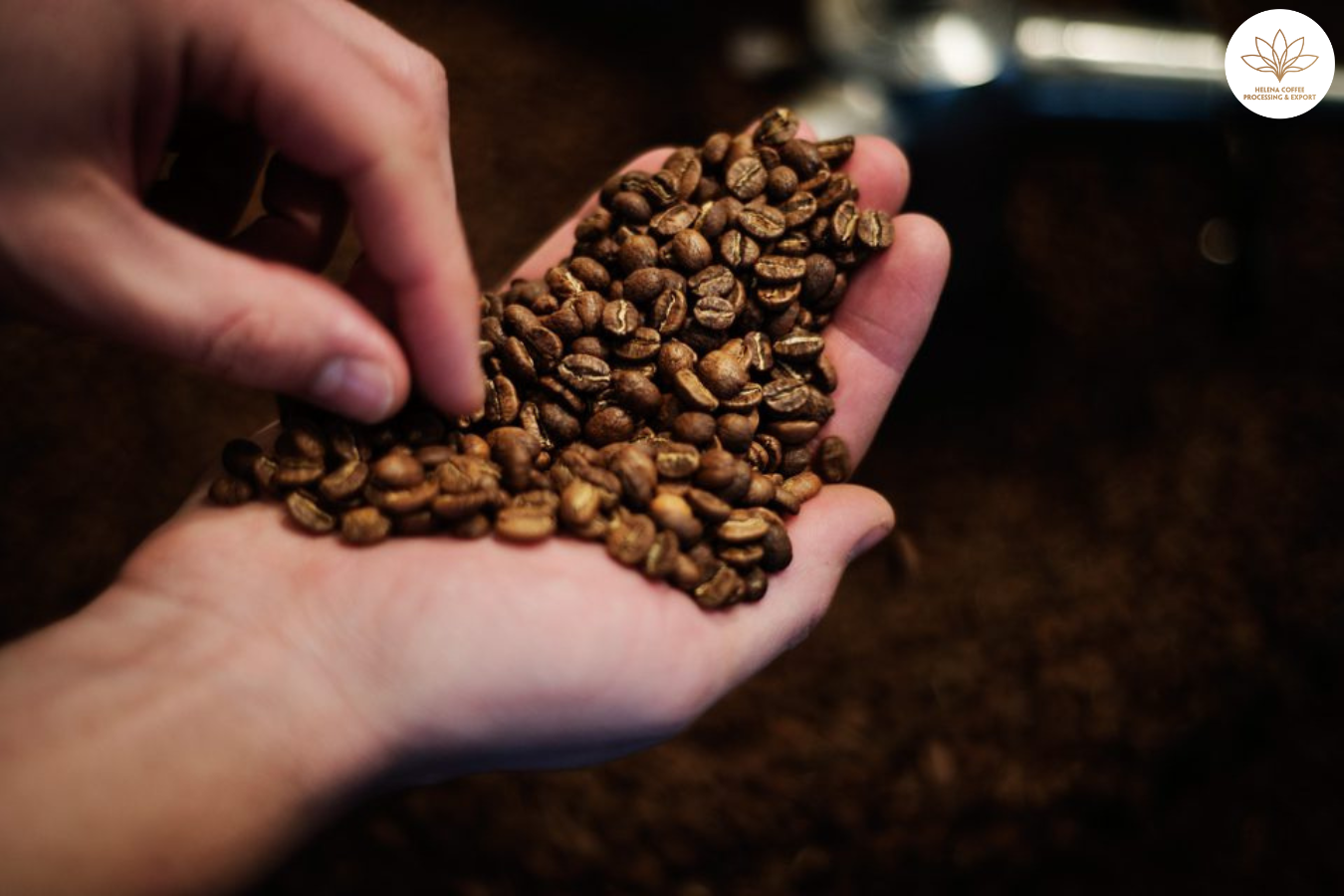
Nordic specialty coffee roasters: The indelible mark of Nordic roasters on the world of specialty coffee is unmistakable. Visionaries from Norway, Denmark, Sweden, and Finland catalyzed a coffee revolution in the late 20th and early 21st centuries that has since captured the globe’s attention.
The widespread adoption of specialty coffee can, in part, be attributed to Scandinavia’s deep-seated coffee culture. Notably, in 2016, statistics showed that five of the top six countries in terms of per capita coffee consumption were in Scandinavia.
This penchant for coffee is not just about quantity; it’s driven by a discerning taste for quality and a commitment to sustainable sourcing—principles that have perpetually spurred innovation and elevated the global coffee narrative.
In the contemporary landscape, however, the influence is more distributed. Countries like the United States, Australia, and several in Southeast Asia are making significant contributions to the coffee industry, broadening the spectrum of influence.
This shift raises a compelling question: Have Nordic roasters maintained their influential status in the global coffee arena?
To explore this, insights were sought from Tim Wendelboe and Klaus Thomsen, two eminent Scandinavian roasters, whose perspectives shed light on the current standing of Nordic innovation in coffee roasting.
Tracing the Scandinavian Roasters’ Role in the Advent of Specialty Coffee
To appreciate the Scandinavian influence on specialty coffee, it’s essential to delve into Scandinavia’s coffee history.
Arriving in the late 17th century, coffee found a unique place in Scandinavian society, particularly as alcohol consumption dwindled due to prohibition in Norway and hefty taxes on spirits across the region. Coffee swiftly became a cultural cornerstone, with its consumption becoming a hospitable gesture for visitors in every Nordic home.
This coffee-centric culture birthed various traditions, such as Sweden’s ‘Fika,’ a social coffee break accompanied by pastries, and Iceland’s ‘Kaffitímar,’ a pause in the day for coffee and relaxation. Denmark’s ‘Kaffepause’ similarly reflects the ingrained custom of taking spontaneous coffee breaks.
The term “specialty coffee” may have been coined by Erna Knutsen in the mid-1970s, but it’s the Scandinavian roasters who are credited with being pivotal in its rise during the 1990s and early 2000s.

Klaus Thomsen, co-founder of Coffee Collective in Copenhagen, emphasizes Scandinavia’s long-standing preference for washed Arabica over Robusta, noting the established taste for cleaner, more nuanced coffees. He points out Denmark’s early exposure to the aromatic and acidic coffees of Kenya, which shaped the country’s palate.
Echoing this narrative, Tim Wendelboe, the founder of his eponymous roastery in Oslo, acknowledges Solberg & Hansen’s significant impact on Norway’s coffee scene. By the late 1990s and early 2000s, this roaster was not only buying exceptional coffees from Cup of Excellence auctions but also supplying many Oslo coffee shops with these high-quality beans.
Wendelboe remarks on the early Nordic fascination with ‘coffee with an address,’ observing the shift from blends to single-origin purchases by roasters in the early 2000s, a testament to the region’s pioneering role in the specialty coffee movement.
The Genesis of the World Barista Championship and Its Nordic Roots
Tim sheds light on the pivotal role the Norwegian coffee community played in launching the inaugural World Barista Championship (WBC), a now-iconic event in the coffee industry’s calendar.
“The concept for the Nordic Barista Championship originated from Norwegian Alf Kramer, materializing for the first time in 1998,” he recounts. “This regional event laid the groundwork for the global stage, leading to the first World Barista Championship held in Monte Carlo in 2000.”
Norway’s own Robert Thoresen triumphed at this premiere competition, clinching the top spot, while his Icelandic and Danish peers secured the second and third places, respectively.
Klaus reflects on how this victory helped cement the Nordic region’s reputation as a powerhouse in the international coffee sphere. “By 2007, inspired by our experiences at the WBC and fueled by a wealth of new insights, Tim and I launched our own roasting ventures, and Koppi Roasters opened its doors in Sweden.”
The ethos that united these Nordic roasters centered on direct trade practices, fostering lasting relationships with producers, and a dedication to lighter roast profiles that accentuated the intrinsic flavors of the coffee.
Tim underscores the significance of collaboration in nurturing the Scandinavian specialty coffee market. “Our thirst for knowledge was insatiable, and the only path to satiation was through solidarity,” he explains. “The dialogue between roasters was collegial rather than competitive. It was a collective journey of knowledge exchange and mutual growth.”
The Resonating Impact of Nordic Coffee Culture on the Global Stage
In the global tapestry of coffee culture, the footprint of Nordic roasters is unmistakable. From the detailed narratives on coffee packaging that trace each bean’s origin to the minimalist aesthetic of café interiors, the Nordic influence permeates. This extends to an increased global appetite for filter coffee, a testament to the region’s enduring impact.
Tim discusses how the Nordic enthusiasm for Cup of Excellence auctions and their readiness to invest in higher-priced coffees have demonstrated to the world’s roasters the viability of these premium beans in the market.
Klaus concurs with this sentiment, highlighting the pioneering nature of direct trade and the cultivation of enduring partnerships with coffee farmers as a source of inspiration for the industry at large.
He reflects on Coffee Collective’s own history, noting, “The very first coffees we purchased came from farms in Guatemala and Brazil. Fifteen years later, those partnerships remain a cornerstone of our operation, exemplifying the long-term commitment that has become synonymous with the Nordic approach to coffee.”
The Nordic Influence and the Rise of Light Roasts
A transformative trend attributable to Nordic roasters is their preference for light roast profiles, which has markedly influenced global coffee practices. Tim offers insights into the evolution of this approach.
Reflecting on the early days of his roastery in 2007, he remarks that their initial roasting style leaned towards darker profiles. This changed when he encountered an exporter whose coffee samples were exceptionally flavorful, in stark contrast to the over-roasted quality of their own. “That moment was a turning point,” he recalls, “It sparked the realization that we needed to shift our roasting technique.”
Tim’s participation in Nordic roasting competitions with lighter roasts catalyzed a broader industry trend, as he observed other businesses adopting similar practices.
Klaus, however, cautions against oversimplifying the roasting styles of Scandinavian roasters. “The term ‘Nordic roast’ doesn’t fully capture the diversity among us,” he asserts. “Nonetheless, our method—aiming for the lightest roast that still fully develops the coffee’s flavor—has left a significant mark on the industry.”
He believes in a personalized approach to roasting, one that prioritizes individual taste over broader market trends. “Our philosophy is rooted in the belief that if the coffee appeals to our own palate, it will resonate with others as well,” he concludes.
Evaluating the Continued Impact of Nordic Coffee Innovation
The pioneering role of Nordic roasters in the development of specialty coffee is undeniable, yet we are witnessing a shift where other nations are also leaving their mark on the industry.
Notable roasters from the United States and Australia, such as Onyx Coffee Lab, ONA Coffee, and Proud Mary, are distinctly influencing global coffee trends. A notable innovation from Australian roasters is the practice of freezing roasted beans to extend their freshness and enhance grind uniformity, a technique that’s garnering adoption worldwide.
Additionally, the international stage has seen a diversified lineup in the World Barista Championship (WBC) finals, featuring competitors from the US, Canada, Australia, Japan, South Korea, New Zealand, the Netherlands, and Taiwan in recent years.
This raises a critical inquiry: Do Nordic roasters still wield the same level of influence as in their heyday?
Klaus offers his perspective, acknowledging that Nordic countries continue to lead in certain areas, such as roast profiling. “Yet, when it comes to coffee competitions, our pioneering status has evolved,” he admits.

He suggests that the sphere of influence in the specialty coffee world has expanded beyond regional or national confines. “Innovation in specialty coffee is diverse—it can range from refining batch brew techniques to adjusting roast profiles,” he notes, highlighting the global nature of contemporary coffee innovation.
Redefining Innovation in the Coffee Industry
Klaus broadens the definition of innovation beyond mere gadgetry and novel brewing methods. “Innovation isn’t just about inventing new products to enhance the coffee experience,” he remarks. “Scandinavians tend to be more critical, often scrutinizing whether these innovations truly offer tangible benefits or if they’re simply driven by marketing hype.”
He insists that the scope of innovation in specialty coffee should be more expansive. “It must also encompass ethical considerations,” Klaus emphasizes. “This includes finding ways to empower farmers, reducing our environmental footprint, and fostering healthier workplace conditions.”
Tim echoes this sentiment, reminding us that coffee is more than a commodity; it’s an entire experience. “While there’s a fascination with the revolutionary, we must not lose sight of our core objective: to deliver exceptional coffee and outstanding customer service,” he states. “However, there are boundaries to how far this can be taken.”
Exploring the Horizon of Coffee Innovation
As specialty coffee trends are increasingly influenced by roasters and cafés worldwide, the question arises: Will the Nordic influence continue to be a source of inspiration?
Klaus projects that in the realm of sustainability, the impact of Scandinavian roasters will persist. “The trend towards sustainability and transparency in sourcing practices is likely to intensify,” he predicts. “This should include a greater openness about the prices paid to coffee farmers.”
Tim aligns with Klaus’s vision, expressing his aspiration for the broader industry. “My hope is that all roasters, including the large players, will commit to paying fair, sustainable prices for their coffee,” he asserts. “Additionally, I’d like to see an expansion of environmentally beneficial practices like regenerative agriculture in coffee cultivation.”
Klaus is optimistic about the growth trajectory of the Nordic specialty coffee market, which he believes could catalyze further global innovation. “The surge of micro roasters across Nordic countries in recent times is just the beginning,” he suggests. “I anticipate a proliferation of specialty coffee shops, not just in metropolitan hubs but also in smaller communities.”
Tim emphasizes the influential role of Nordic consumers in fostering industry innovation. “Scandinavians are often prepared to invest more in premium coffee, supported by a relatively strong economy,” he explains. “This consumer willingness to pay for quality enables roasters to sustain their purchase of exceptional coffees.”
FAQS: